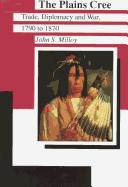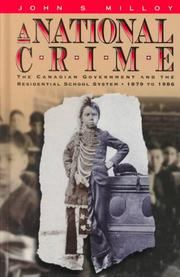| Listing 1 - 2 of 2 |
Sort by
|

ISBN: 1283091291 9786613091291 0887553834 9780887553837 0887551416 9780887551413 088755623X 9780887556234 Year: 1988 Publisher: Winnipeg, Manitoba : The University of Manitoba Press,
Abstract | Keywords | Export | Availability | Bookmark
 Loading...
Loading...Choose an application
- Reference Manager
- EndNote
- RefWorks (Direct export to RefWorks)
Milloy describes three distinct eras, each characterized by a paramount motive for war--the wars of migration and territory, the horse wars during the 'golden years' of Plains Indian life, and buffalo wars, which mark the trail to the reserves. Intimately linked to each era was a particular trade pattern and a military system that linked the Cree with other Plains tribes and non-Natives. By tracing these themes, Milloy charts the ability of the Cree to serve their economic interests by forging alliances or undertaking military or diplomatic offensives.
Cree Indians --- Algonquian Indians --- Indians of North America --- History. --- Commerce. --- Wars.

ISBN: 1283090554 9786613090553 0887553036 9780887553035 9780887554155 0887554156 9780887555190 0887555195 0887551661 9780887551666 0887556469 9780887556463 9781283090551 6613090557 9780887555213 0887555217 9780887557897 0887557899 Year: 2017 Publisher: Winnipeg, Manitoba
Abstract | Keywords | Export | Availability | Bookmark
 Loading...
Loading...Choose an application
- Reference Manager
- EndNote
- RefWorks (Direct export to RefWorks)
“I am going to tell you how we are treated. I am always hungry.” — Edward B., a student at Onion Lake School (1923) "[I]f I were appointed by the Dominion Government for the express purpose of spreading tuberculosis, there is nothing finer in existance that the average Indian residential school.” — N. Walker, Indian Affairs Superintendent (1948) For over 100 years, thousands of Aboriginal children passed through the Canadian residential school system. Begun in the 1870s, it was intended, in the words of government officials, to bring these children into the “circle of civilization,” the results, however, were far different. More often, the schools provided an inferior education in an atmosphere of neglect, disease, and often abuse. Using previously unreleased government documents, historian John S. Milloy provides a full picture of the history and reality of the residential school system. He begins by tracing the ideological roots of the system, and follows the paper trail of internal memoranda, reports from field inspectors, and letters of complaint. In the early decades, the system grew without planning or restraint. Despite numerous critical commissions and reports, it persisted into the 1970s, when it transformed itself into a social welfare system without improving conditions for its thousands of wards. A National Crime shows that the residential system was chronically underfunded and often mismanaged, and documents in detail and how this affected the health, education, and well-being of entire generations of Aboriginal children.
Off-reservation boarding schools --- Indians of North America --- American aborigines --- American Indians --- First Nations (North America) --- Indians of the United States --- Indigenous peoples --- Native Americans --- North American Indians --- Indian residential schools --- Non-reservation boarding schools --- Non-reservation schools --- Off-reservation Indian boarding schools --- Off-reservation Indian schools --- Off-the-reservation boarding schools --- Residential schools, Indian --- Boarding schools --- History. --- Education --- Culture --- Ethnology --- Social conditions. --- Government relations. --- Government relations --- Residential Schools, Canada, Canadian Goverment, Indigenous, First Nations, Indians, History, Reconciliation. --- residential school.
| Listing 1 - 2 of 2 |
Sort by
|

 Search
Search Feedback
Feedback About UniCat
About UniCat  Help
Help News
News